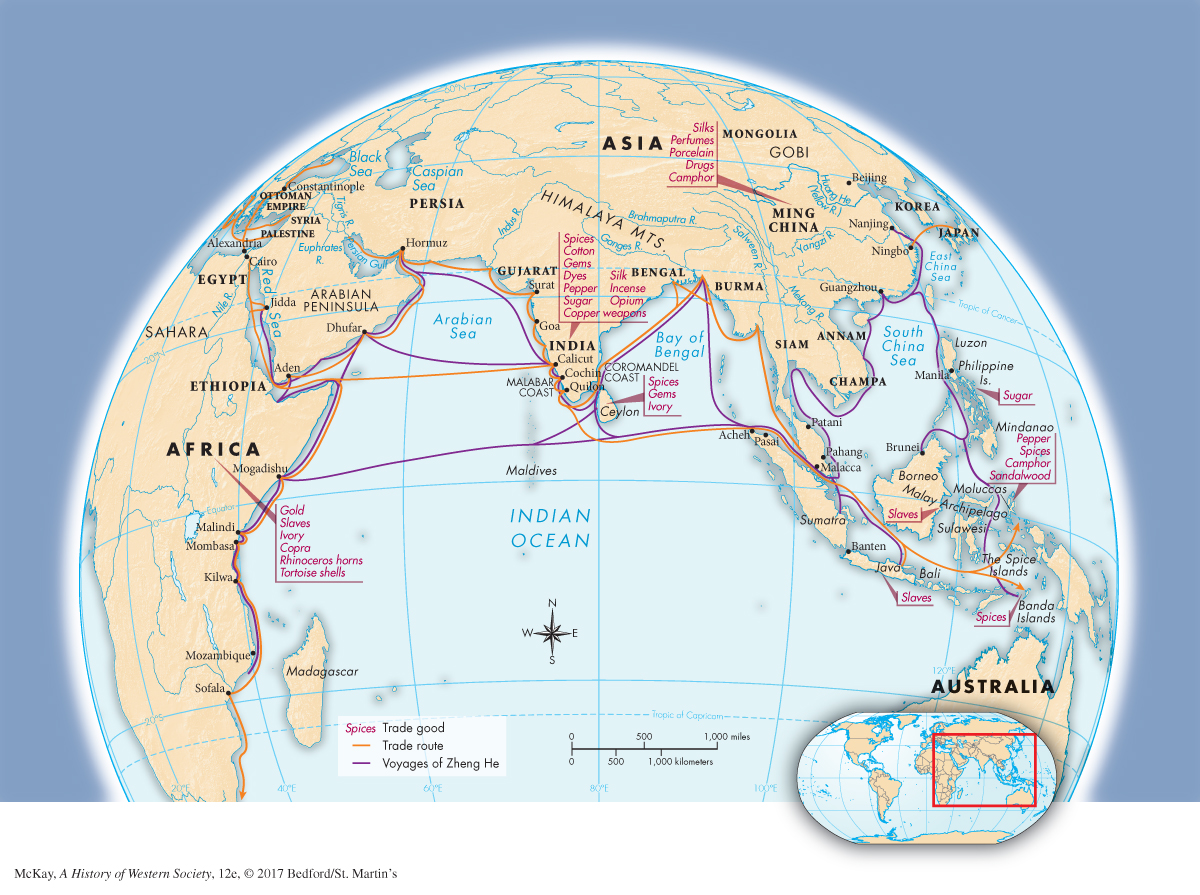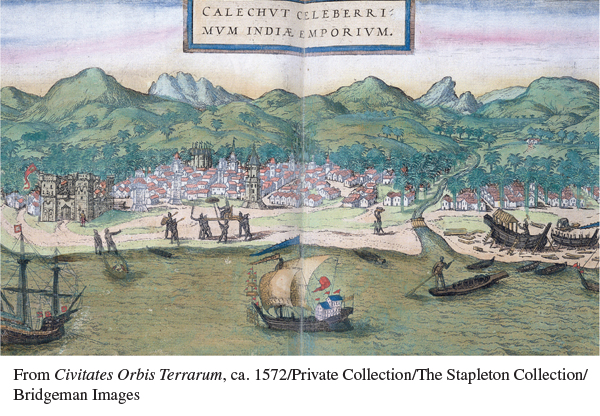A History of Western Society: Printed Page 428
A History of Western Society, Value Edition: Printed Page 411
A History of Western Society, Concise Edition: Printed Page 428
The Trade World of the Indian Ocean
The Indian Ocean was the center of the Afroeurasian trade world, serving as a crossroads for exchange among China, India, the Middle East, Africa, and Europe (Map 14.1). From the seventh through the fourteenth centuries, the volume of this trade steadily increased, declining only during the catastrophic years of the Black Death.
Merchants congregated in a series of cosmopolitan port cities strung around the Indian Ocean. Most of these cities had some form of autonomous self-

The Mongol emperors opened the doors of China to the West, encouraging Europeans like the Venetian trader and explorer Marco Polo to do business there. Marco Polo’s tales of his travels from 1271 to 1295 and his encounter with the Great Khan fueled Western fantasies about the exotic Orient. Polo vividly recounted the splendors of the khan’s court and the city of Hangzhou, which he described as “the finest and noblest in the world” in which “the number and wealth of the merchants, and the amount of goods that passed through their hands, was so enormous that no man could form a just estimate thereof.”1 After the Mongols fell to the Ming Dynasty in 1368, China entered a period of economic expansion, population growth, and urbanization. By the end of the dynasty in 1644, the Chinese population had tripled to between 150 million and 200 million people. The city of Nanjing had 1 million inhabitants, making it the largest city in the world, while the new capital, Beijing, had more than 600,000 inhabitants, more than any European city. Historians agree that China had the most advanced economy in the world until at least the start of the eighteenth century.
China also took the lead in exploration, sending Admiral Zheng He’s fleet along the trade web as far west as Egypt. From 1405 to 1433 each of his seven expeditions involved hundreds of ships and tens of thousands of men. In one voyage alone, Zheng He (JEHNG HUH) sailed more than 12,000 miles, compared to Columbus’s 2,400 miles on his first voyage some sixty years later.2 Although the ships brought back many wonders, such as giraffes and zebras, the purpose of the voyages was primarily diplomatic, to enhance China’s prestige and seek tribute-

Another center of trade in the Indian Ocean was India. The subcontinent had ancient links with its neighbors to the northwest: trade between South Asia and Mesopotamia dates back to the origins of human civilization. The Roman Empire acquired cotton textiles, exotic animals, and other luxury goods from India. Arab merchants who circumnavigated India on their way to trade in the South China Sea established trading posts along the southern coast of India, where the cities of Calicut and Quilon became thriving commercial centers. India was an important contributor of goods to the world trading system. Most of the world’s pepper was grown in India, and Indian cotton and silk textiles, mainly from the Gujarat region, were also highly prized.